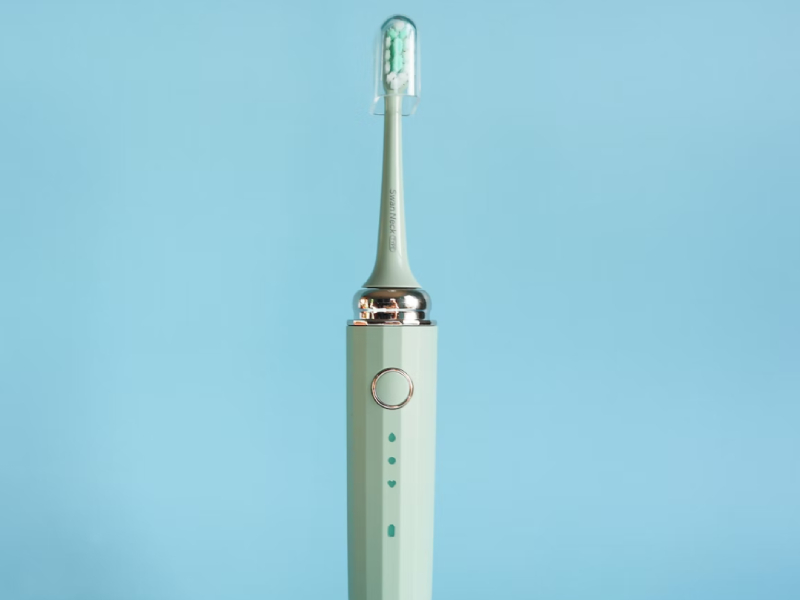Choosing an electric toothbrush can be a daunting task, especially with so many options available on the market. To help make the decision easier, it's important to understand the key features and benefits of electric toothbrushes, and how they can help improve your oral hygiene.Here are some important things to consider when choosing an electric toothbrush
Type of Brush Head
There are two main types of brush heads available for electric toothbrushes: rotary and oscillating. Rotary brush heads spin in a circular motion and are great for a thorough clean, while oscillating brush heads move back and forth and are better for gently removing plaque.
Brush Strokes Per Minute (SPM)
Brush strokes per minute refer to the number of times the brush head moves in one minute. Higher SPM can result in a more thorough clean, but too many strokes can be hard on the gums. Most electric toothbrushes have adjustable SPM settings, so you can choose the level that works best for you.
Pressure Sensor
A pressure sensor is a feature that alerts you if you're brushing too hard. Over-brushing can cause damage to your gums, so it's important to use the right amount of pressure.
Timer
A timer is a useful feature that helps ensure you're brushing for the recommended two minutes. Some electric toothbrushes have timers that beep every 30 seconds to indicate when it’s time to switch to a different quadrant of your mouth.
Battery Life
Electric toothbrushes need to be recharged, so it's important to consider the battery life when choosing a toothbrush. A longer battery life means you won't have to charge the toothbrush as often.
Price
Electric toothbrushes can range in price from $20 to $300, so it's important to set a budget and stick to it. High-end toothbrushes may have more features, but they're not necessarily better. A mid-range toothbrush with a pressure sensor, timer, and adjustable SPM settings is usually sufficient for most people.
Brand Reputation
It’s important to choose a reputable brand when it comes to oral hygiene. Some of the most popular brands in the electric toothbrush market include Philips Sonicare, Oral-B, and Foreo.
Replacement Brush Heads
Some electric toothbrushes come with replacement brush heads, while others require you to purchase them separately. It's important to consider the cost of replacement brush heads when choosing a toothbrush, as they will need to be replaced every three to six months.
Multiple Brush Modes
Some electric toothbrushes come with multiple brush modes, such as sensitive, deep clean, and whitening modes. These modes can be adjusted to suit your needs and provide a customized brushing experience.
Travel Case
If you travel frequently, it's important to consider whether the electric toothbrush comes with a travel case. This will help protect the toothbrush and keep it clean and hygienic when you're on the go.
Bluetooth Connectivity
Some high-end electric toothbrushes come with Bluetooth connectivity, which allows you to track your brushing habits and receive personalized brushing recommendations through a smartphone app.
Waterproof Design
It’s important to choose an electric toothbrush that's waterproof, as this makes it easier to clean and use in the shower.
Finally, it's important to consider your own brushing habits and needs when choosing an electric toothbrush. For example, if you have sensitive teeth or gums, a toothbrush with a sensitive mode and a pressure sensor may be a better choice.
In conclusion, there are many factors to consider when choosing an electric toothbrush, from the type of brush head and battery life to additional features such as Bluetooth connectivity and waterproof design. By taking the time to consider your own brushing needs and habits, you can choose the best electric toothbrush for you and achieve a cleaner, healthier smile.

Q&A
What are the benefits of using an electric toothbrush compared to a manual toothbrush?
Electric toothbrushes are more effective at removing plaque and reducing gingivitis compared to manual toothbrushes. They also provide a more thorough and efficient clean, allowing for a better overall oral health experience.
What is the difference between rotary and oscillating toothbrushes?
Rotary toothbrushes have a round brush head that rotates in a circular motion, while oscillating toothbrushes have a brush head that moves back and forth. Oscillating toothbrushes are typically more gentle and can be better for sensitive teeth, while rotary toothbrushes are more effective at removing plaque.
What type of brush head should I choose?
It depends on your personal preferences and oral health needs. Some people prefer a brush head with soft bristles for a gentle cleaning experience, while others prefer a brush head with medium or firm bristles for a more thorough cleaning. Some brush heads are also designed specifically for sensitive teeth, deep cleaning, or gum care.
How long should I charge my electric toothbrush before using it?
Most electric toothbrushes require about 24 hours of charging time before they are ready to use. The charging time may vary depending on the make and model of the toothbrush.
How long should I replace the brush head?
It is recommended to replace the brush head every 3-6 months, or as recommended by the manufacturer. This helps ensure that the brush head remains effective and provides a thorough cleaning.
What is the difference between a rechargeable and disposable electric toothbrush?
A rechargeable electric toothbrush can be recharged and used repeatedly, while a disposable electric toothbrush is meant to be used once and then discarded. Disposable toothbrushes are typically more affordable, but they are not as environmentally friendly as rechargeable toothbrushes.
What is the average battery life of an electric toothbrush?
The battery life of an electric toothbrush can vary greatly depending on the make and model, but most electric toothbrushes have a battery life of about 2-4 weeks. Some high-end models may have a longer battery life of up to several months.

 Facebook
Facebook
 Ins
Ins